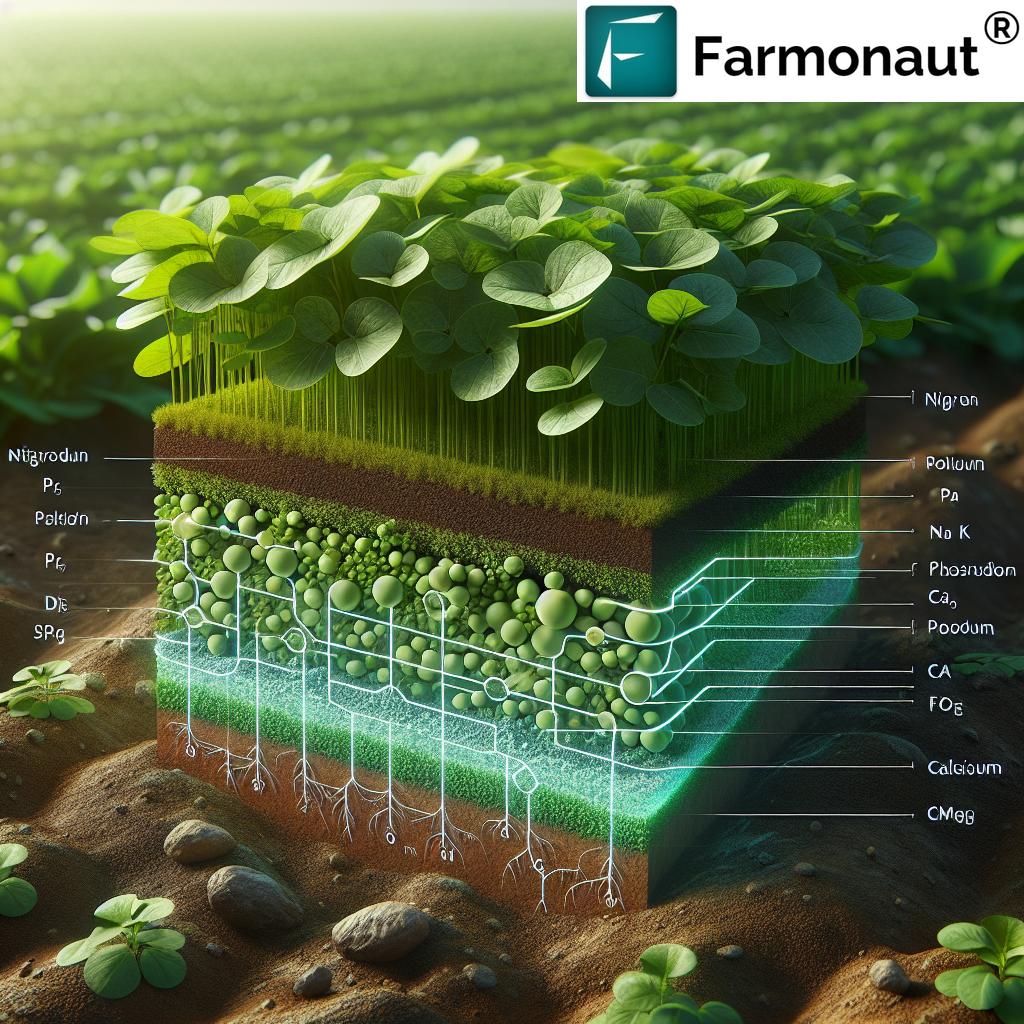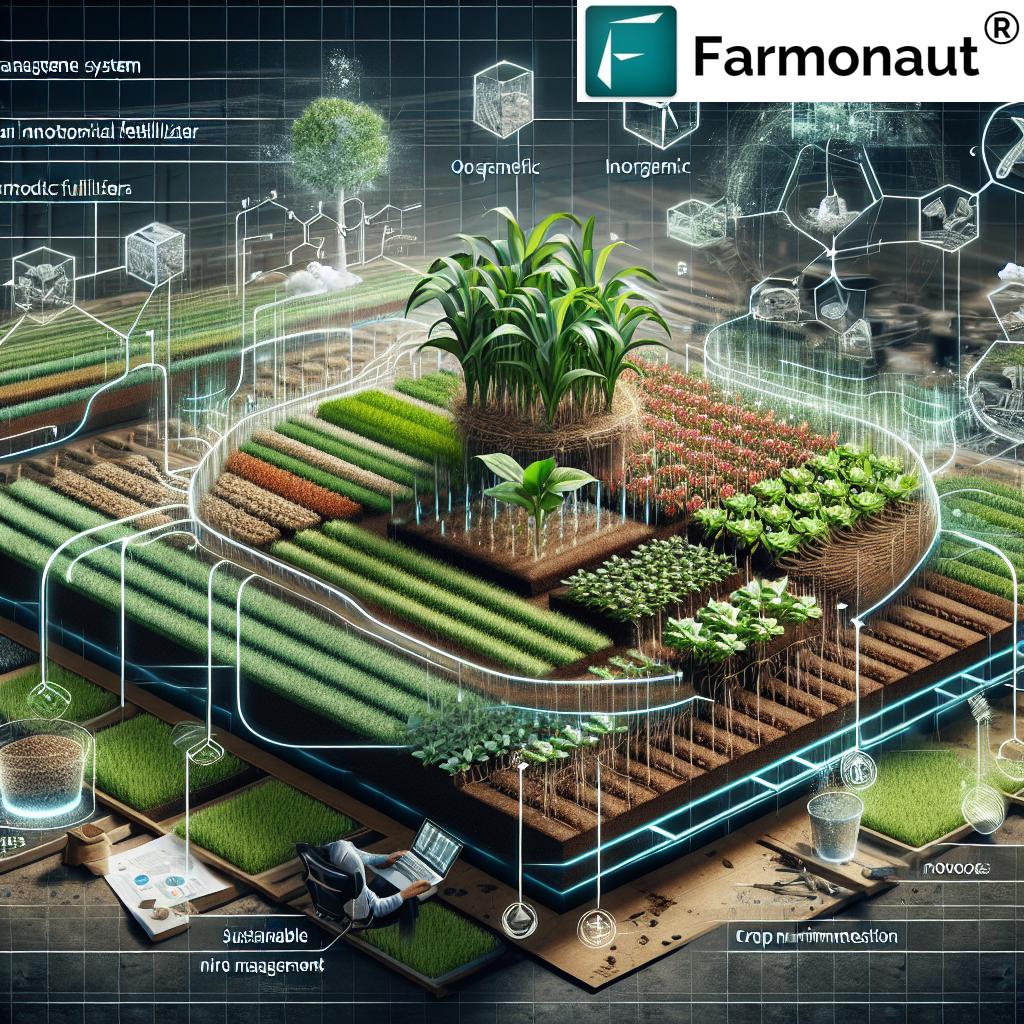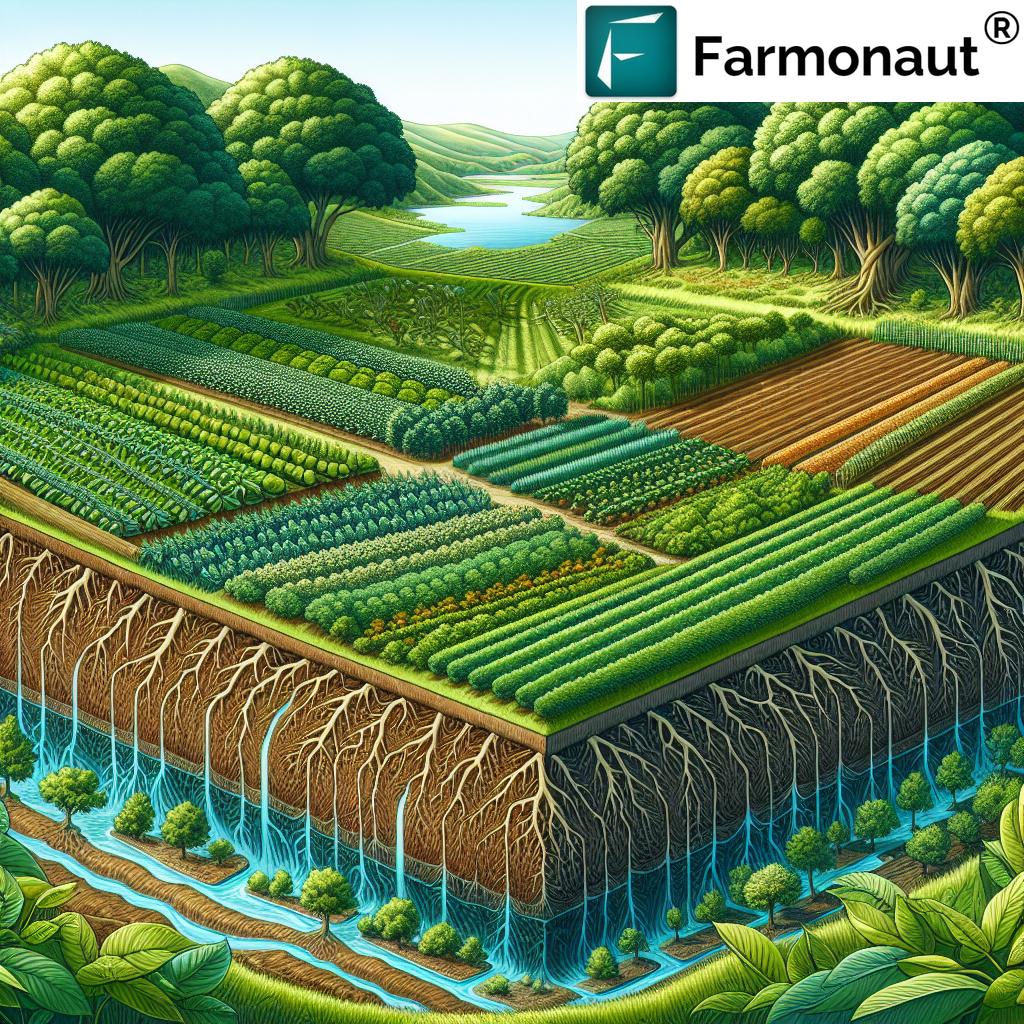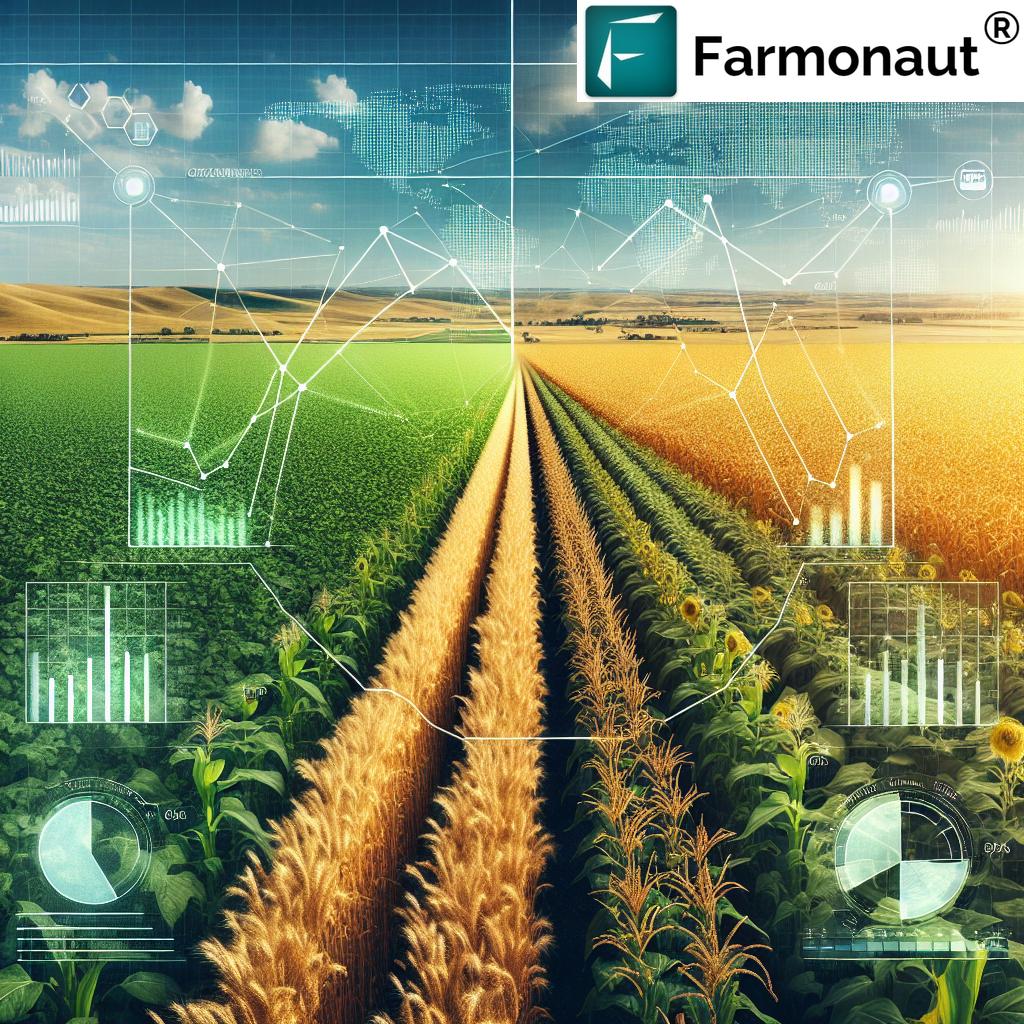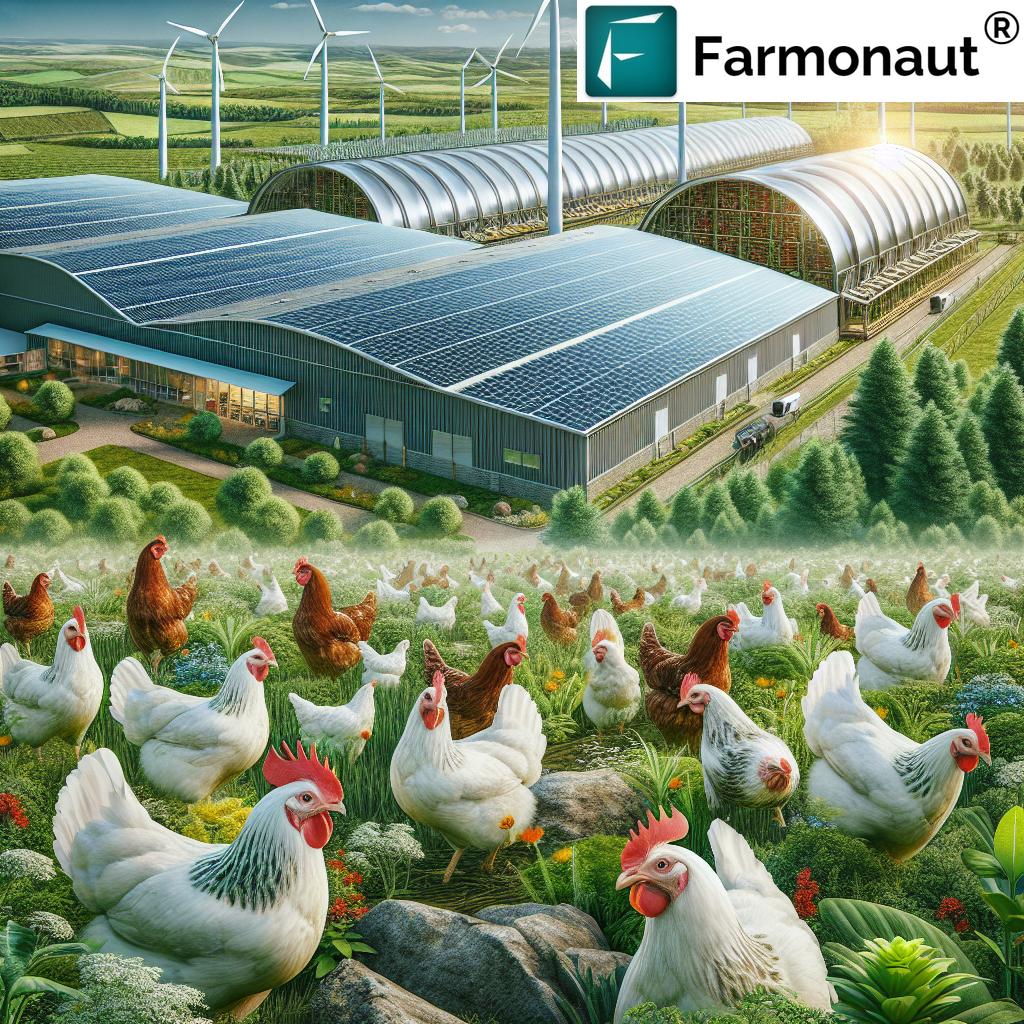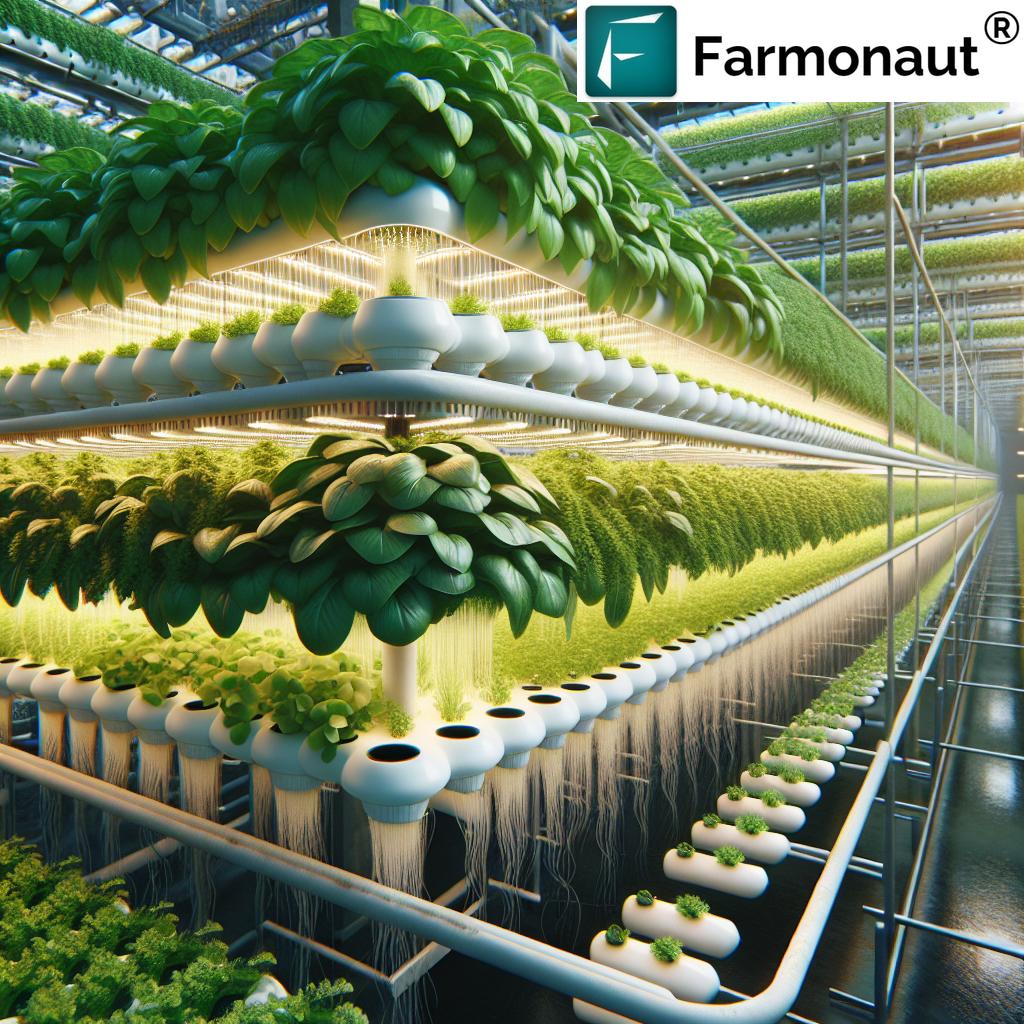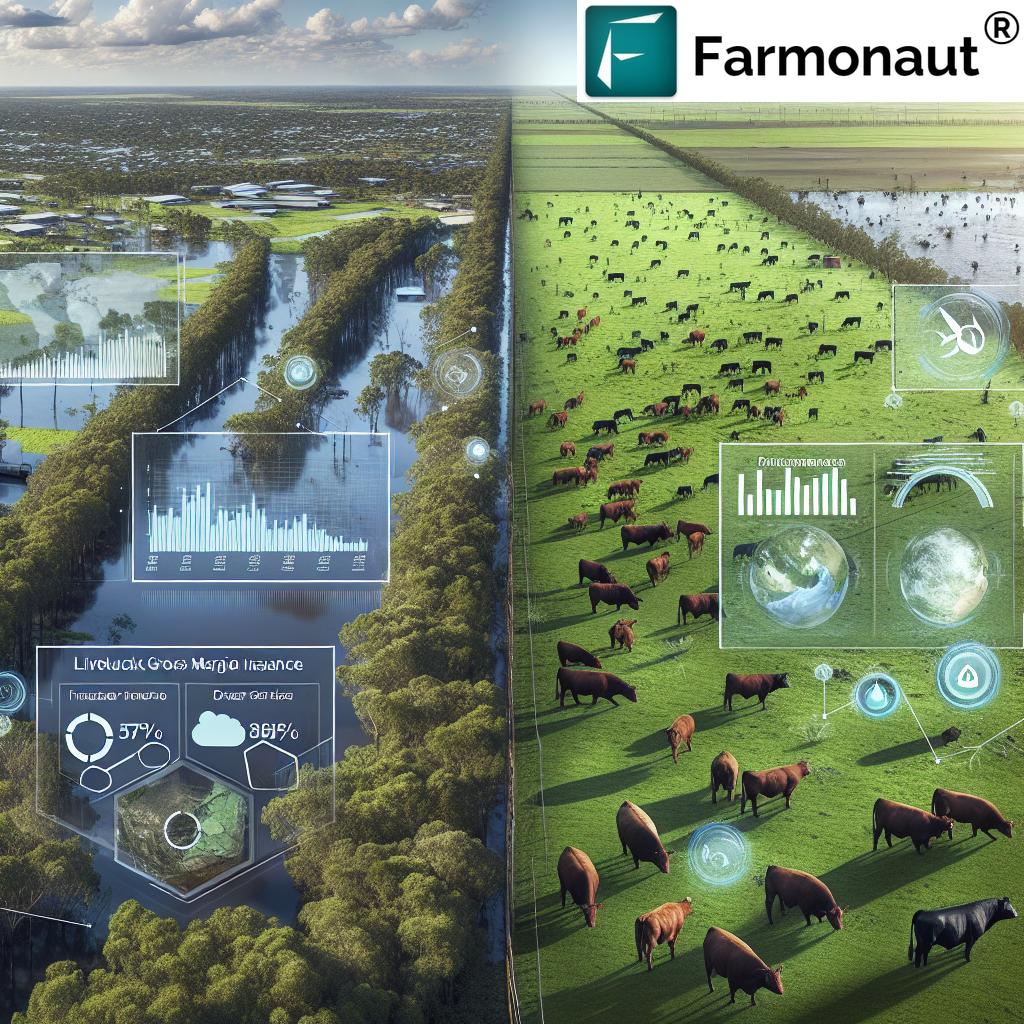Crop Nutrition: 7 Proven Strategies for Sustainable Growth
“Balanced nutrient management can boost crop yields by up to 30% while reducing environmental impact.”
Table of Contents
- Introduction to Crop Nutrition
- Essential Nutrients for Plants: Macronutrients & Micronutrients
- Nutrient Uptake, Mobility, and Deficiencies in Crops
- Soil Fertility and Effective Nutrient Management
- 7 Proven Crop Nutrition Strategies
- Comparison Table of Crop Nutrition Strategies
- Innovative Crop Nutrition Solutions and Technologies
- Farmonaut’s Role in Sustainable Crop Nutrition
- Sustainable Farming Practices for Future Growth
- Key Challenges and Future Directions
- Frequently Asked Questions
- Conclusion
Introduction to Crop Nutrition: The Foundation of Sustainable Growth
As we enter a new era of agriculture, sustainable crop nutrition and soil fertility stand at the forefront of food security, environmental health, and economic prosperity. Understanding and applying essential nutrients for plants is not just a technical requirement—it’s a driving force for sustainable farming practices that enhance growth, yield, and resilience.
Crop nutrition encompasses the study and application of nutrients required for optimal plant development and reproduction. Proper plant nutrient management keeps us ahead of challenges like nutrient imbalances, environmental impact, and fluctuating input costs. With more than 50% of the world’s soils described as nutrient-deficient, the urgency for adopting balanced fertilization strategies and innovative crop nutrition solutions has never been greater.
“Over 50% of global soils are nutrient-deficient, highlighting the need for sustainable crop nutrition strategies.”
Essential Nutrients for Plants: Macronutrients & Micronutrients
To build robust plants, we must recognize that they require a variety of nutrients. Let’s examine these elements, their roles, and why they’re vital for plant health and sustainable agricultural systems.
Macronutrients: The Building Blocks of Growth
- Nitrogen (N): Vital for protein synthesis, chlorophyll production, and influencing leafy growth. Deficiency often leads to stunted growth and pale leaves.
- Phosphorus (P): Essential for energy transfer (ATP), root development, and flowering. Promotes early crop maturity and increases yield potential.
- Potassium (K): Regulates water balance, enzyme activation, and disease resistance. Deficiency results in weak stems and reduced resistance to drought, pests, and disease.
- Calcium (Ca): Important for cell wall structure, membrane stability, and enzyme function. Integral for root and shoot growth.
- Magnesium (Mg): Central component of chlorophyll; aids photosynthesis. Supports enzyme activation and protein formation.
- Sulfur (S): Integral to amino acid and vitamin synthesis. Promotes healthy protein production and crop flavor/aroma.
Micronutrients: Small in Quantity, Big in Impact
- Iron (Fe): Crucial for chlorophyll synthesis and electron transport.
- Manganese (Mn): Involved in photosynthesis and nitrogen assimilation.
- Zinc (Zn): Affects enzyme function, hormone production, and protein synthesis.
- Copper (Cu): Essential in photosynthesis and plant respiration.
- Boron (B): Important for cell wall formation and crop reproductive development.
- Molybdenum (Mo): Facilitates nitrogen fixation and nitrate reduction, enhancing legume performance.
Why Balancing These Essential Nutrients Matters
Balanced ratios of macronutrients and micronutrients are required for robust plant health, high yields, and disease resistance. Excess or deficiency of any nutrient can disrupt protein synthesis, photosynthesis, root development, and overall plant productivity, impacting food security and sustainability.
Nutrient Uptake, Mobility, and Deficiencies in Crops
For efficient crop nutrition, we must understand how plants absorb nutrients and how deficiencies manifest in different growth stages.
How Do Plants Uptake Nutrients?
Plants absorb nutrients from the soil solution primarily through their roots. Several factors determine uptake efficiency:
- Soil pH: Affects availability and solubility of essential nutrients.
- Soil texture & structure: Impacts water retention, root penetration, and movement of ions.
- Organic matter: Improves microbial processes that support nutrient release and retention.
- Microbial activity: Aids in nutrient solubilization and plant-microbe interactions.
Nutrient Mobility and Deficiency Manifestations
Nutrient mobility within the plant influences where deficiency symptoms first appear:
-
Mobile nutrients (e.g., N, P, Mg): Deficiencies typically show up in older leaves as plants redirect these nutrients to new growth.
Examples: Nitrogen (N) deficiency—yellowing of lower leaves; Phosphorus (P) deficiency—purpling of old leaves. -
Immobile nutrients (e.g., Ca, S, B): Deficiency symptoms appear first in younger tissues since these elements can’t move easily within the plant.
Examples: Calcium (Ca) deficiency—deformed young leaves; Boron (B) deficiency—brittle new tissue.
Diagnosing and Addressing Crop Deficiencies
Effective plant nutrient management hinges on regular visual inspection of plants, soil testing, and prompt correction of imbalances through targeted fertilization strategies.
Soil Fertility and Effective Nutrient Management
Healthy crops are a direct result of fertile, well-managed soils. Soil fertility reflects the soil’s capability to provide essential nutrients for plants in sufficient quantities and availability throughout the growing season. Maintaining soil health is, therefore, central to sustainable farming practices.
Key Steps to Boost Soil Fertility
- Regular Soil Testing: Gives us a precise understanding of nutrient content, pH levels, and required amendments. Guides the application of both organic and inorganic fertilizers.
- Balanced Fertilization: Apply nutrients as per crop requirements, season, and growth stage. Avoids waste, toxicity, and environmental risk.
- Incorporation of Organic Matter: Use of compost, green manure, and crop residues improves soil structure, increases water retention, and fosters beneficial soil microbes.
- Proper Irrigation: Maintaining optimum soil moisture supports nutrient uptake and minimizes leaching.
- Prevention of Soil Erosion: Practices like cover cropping reduce loss of topsoil and nutrients.
The Role of Integrated Nutrient Management (INM)
Combining organic and inorganic fertilizers with biological processes creates a synergistic effect: boosting yield, improving soil health, and minimizing environmental impact. Practices like composting, using biofertilizers, and adding lime or gypsum (as needed) are all examples of effective INM.
7 Proven Crop Nutrition Strategies for Sustainable Growth
Building on a foundation of soil fertility and plant nutrient management, let’s explore the most effective, field-tested strategies to optimize crop nutrition, boost productivity, and ensure long-term sustainability.
1. Precision Nutrient Management via Technology
- What it is: Leveraging precision agriculture technologies, such as satellite-based crop and soil monitoring, GPS, and AI-driven recommendations.
- How it works: Tools like Farmonaut provide real-time actionable data on crop health, soil moisture, and nutrient needs, enabling accurate, site-specific fertilizer application.
- Benefits: Increases nutrient use efficiency, reduces input costs, prevents environmental pollution, and maximizes yields.
For advanced, satellite-based farm management, experience the full capabilities of Farmonaut’s Large Scale Farm Management Suite.
2. Balanced Fertilization Strategies
- What it is: Synchronizing the type, timing, and quantity of fertilizer application according to crop requirements determined through soil and plant analysis.
- How it works: By applying nutrients in needed ratios, we avoid over- or under-supplying any element, thus optimizing growth and minimizing waste and runoff.
- Benefits: Yields increases of up to 30%, improved soil health, and lower risk of environmental contamination.
3. Use of Organic Amendments
- What it is: Applying compost, manure, crop residues, and green manures to fields to boost organic matter and microbiome activity.
- How it works: Organic matter releases nutrients slowly and enhances soil structure, leading to improved nutrient availability for plants.
- Benefits: High sustainability, reduced dependency on synthetic inputs, and significant enhancement of soil fertility.
4. Crop Rotation and Diversification
- What it is: Rotating different crops across seasons and growing complementary crops together.
- How it works: Each crop has unique nutrient demands and root structures; rotation disrupts pest cycles and reduces recurring deficiencies.
- Benefits: Maintains and regenerates soil fertility, promotes biodiversity, and suppresses disease.
5. Integrated Nutrient Management (INM)
- What it is: Combining organic and inorganic fertilizers with biological inoculants for holistic crop nutrition.
- How it works: Integrates the fast-action benefits of synthetic fertilizers with the soil improvement power of organics.
- Benefits: Optimizes plant health, enhances sustainability, and curbs environmental risks.
6. Nano-fertilizers and Micronutrient Fortification
- What it is: Utilizing nano-encapsulated fertilizers and tailored micronutrient blends to maximize nutrient uptake.
- How it works: Nanotechnology ensures nutrients are more efficiently absorbed by roots, reducing losses through volatilization or leaching.
- Benefits: Improves yield, reduces fertilizer requirements, and boosts overall nutrient-use efficiency.
7. Cover Cropping for Enhanced Soil Health
- What it is: Planting cover crops (like legumes or clover) during off-season to protect and enrich soil.
- How it works: Cover crops fix atmospheric nitrogen, improve organic content, suppress weeds, and protect against erosion.
- Benefits: Maintains long-term soil fertility, increases biodiversity, and reduces the need for synthetic inputs.
For those keen on measuring and reducing farm environmental impact, discover Farmonaut’s Carbon Footprinting Tools – real-time emission data for improved compliance and improved sustainability.
Comparison Table of Crop Nutrition Strategies
| Strategy Name | How it Works | Estimated Yield Boost | Soil Health Benefit | Sustainability Score (1–5) | Main Inputs | Estimated Cost Savings ($/ha) |
|---|---|---|---|---|---|---|
| Precision Nutrient Management | Uses satellite imagery & AI for site-specific application | 15–30% | High | 5 | Fertilizers, digital tools | $80–130 |
| Balanced Fertilization | Matches fertilizer type/quantity to crop needs | 12–30% | Medium-High | 4 | NPK, custom blends | $50–110 |
| Organic Amendments | Improves soil through compost/manure/green manure | 8–20% | High | 5 | Compost, animal manure, crop residue | $40–90 |
| Crop Rotation & Diversification | Alters crop species, disrupting pest/nutrient cycles | 10–23% | Medium-High | 4 | Seeds, planning | $25–70 |
| Integrated Nutrient Management (INM) | Combines organic/inorganic and biofertilizers | 16–28% | High | 5 | Compost, NPK, biofertilizers | $55–120 |
| Nano-Fertilizers & Fortification | Delivers targeted nutrients using nano-tech | 9–21% | Medium | 4 | Nano-fertilizers, micronutrient blends | $42–88 |
| Cover Cropping | Plants legumes/cover crops to enrich soil | 5–16% | High | 5 | Legume seeds, soil prep | $30–80 |
Innovative Crop Nutrition Solutions & Precision Agriculture Technologies
Agricultural innovation is reshaping our crop nutrition management. Let’s explore how precision agriculture and cutting-edge tools are revolutionizing nutrient management for crops, soil, and the environment:
Precision Agriculture Technologies
- Remote Sensing & Satellite Imagery: Track crop health, soil moisture, and nutrient status in real time. Timely interventions prevent stress and support optimal growth.
- AI-Powered Decision Support: AI analyzes images, weather, and historical data to provide actionable recommendations for fertilizer application and resource allocation.
- Variable Rate Technology (VRT): Ensures nutrients are delivered where and when needed—improving crop output and reducing environmental impact.
Nano-Fertilizers & Microbiome Engineering
- What: Nano-encapsulated fertilizers allow more precise delivery of NPK and micronutrients.
- How: Release nutrients slowly at the root zone, increasing uptake and reducing losses.
- Future: Research into microbiome engineering aims to enhance natural nutrient cycling and supplement plant nutrition sustainably.
Enhance food quality and consumer trust with Farmonaut’s Blockchain-Based Product Traceability solutions—ensuring transparency and accountability from farm to table.
Optimize logistics and resource use with Farmonaut’s Fleet Management Tools — for safer, more efficient farm operations and cost reduction.
Farmonaut’s Role in Sustainable Crop Nutrition
As we transition to data-driven decision-making in agriculture, Farmonaut stands at the forefront, democratizing precision agriculture for farms of all sizes. With advanced satellite data, AI-driven insights, and seamless mobile/web API access, Farmonaut empowers farmers with:
- Real-time crop health monitoring—get instant alerts on vegetation stress, chlorophyll levels, and soil moisture.
- AI-based advisory systems—personalized insights for timely nutrient, irrigation, and pest management actions.
- Blockchain-based traceability—track every agricultural product through a secure, tamper-proof ledger for supply chain transparency.
- Resource and fleet management—improve machinery usage, logistics, and reduce fuel and operational costs.
- Carbon footprinting—measure and minimize emissions to meet environmental compliance goals.
Our platform is accessible via web, Android, iOS, and developer API. Get started on your journey to precision agriculture today!
Looking to build with our API? See our Farmonaut API documentation here and explore developer docs.
Reduce risk and improve access to agricultural financing with satellite-based crop loan and insurance verification by Farmonaut.
Sustainable Farming Practices for Long-Term Crop Nutrition
Adopting sustainable farming practices is crucial for protecting environmental health, ensuring food security, and future-proofing our agricultural systems. These approaches work in harmony with natural cycles, fostering resilience and efficiency.
Key Sustainable Crop Nutrition Practices
- Crop Rotation & Diversification: Prevents nutrient depletion, breaks pest and disease cycles, and keeps soils fertile.
- Cover Cropping: Improves nutrient cycling, adds organic matter, and stabilizes soil against erosion.
- Integrated Nutrient Management: Uses the best of both organic and inorganic fertilizers, coupled with biological inputs to maximize efficiency and soil health.
- Precision Application: Reduces ecological harm by minimizing fertilizer waste and runoff through targeted, data-driven application.
- Reduced Tillage: Maintains soil structure, moisture retention, and microbial activity—critical for long-term soil fertility.
Why Sustainability Matters Now
Sustainable crop nutrition is our strongest ally against soil degradation, water shortages, climate change, and rising input expenses. By keeping our farms healthy and productive, we’re securing our food supply and preserving the environment for future generations.
Key Challenges and Future Directions in Crop Nutrition
While crop nutrition management has progressed rapidly, several challenges persist:
- Nutrient Imbalances: Over-reliance on certain synthetic inputs can disrupt natural soil fertility, impairing long-term productivity.
- Environmental Harm: Excessive fertilizer application contributes to water pollution, eutrophication, and greenhouse gas emissions.
- Climate Uncertainty: Shifts in rainfall, temperature, and growing seasons affect nutrient availability and uptake patterns.
To overcome these barriers and continue moving forward, future research and field adoption should focus on:
- Developing nutrient-efficient crop varieties—breeding to enhance uptake and use efficiency for macronutrients and micronutrients.
- Next-generation precision agriculture technologies—advancing satellite analytics, IoT-based soil sensors, and machine learning algorithms for dynamic nutrient management.
- Promotion of sustainable nutrient cycling—utilizing residue management, improved composting, and microbial inoculants to close the nutrient loop.
How We Can Act Today
We can begin by improving our understanding of crop nutrition, investing in soil and plant testing, leveraging data from platforms like Farmonaut, and applying balanced fertilization strategies tailored to our unique fields and crops.
Get Started with Farmonaut’s Precision Agriculture
Frequently Asked Questions (FAQ)
1. What are the most important nutrients for crop growth?
Answer: The primary macronutrients—nitrogen (N), phosphorus (P), and potassium (K)—form the backbone of plant development, while secondary macronutrients (calcium, magnesium, sulfur) and essential micronutrients (iron, manganese, zinc, copper, boron, molybdenum) support specific physiological processes. All are vital for optimal crop growth.
2. How can I know which nutrients my soil lacks?
Answer: Regular soil testing is necessary to determine nutrient levels and pH. This allows you to customize fertilization and avoid nutrient imbalances, leading to higher yields and healthier soils.
3. Is it possible to grow high-yield crops without synthetic fertilizers?
Answer: Yes—by using organic amendments (compost, manure), cover cropping, integrated nutrient management, and precise timing of inputs. However, combining organic approaches with targeted, minimal synthetic fertilization may yield the best balance of productivity and sustainability.
4. How does Farmonaut help with crop nutrition and sustainability?
Answer: Farmonaut provides farmers with real-time data on crop health, soil moisture, and weather forecasts, enabling precise nutrient management. Additional offerings include AI-based advisories, carbon footprint tracking, traceability, and seamless mobile/web access. Try it on web, Android or iOS today.
5. What is the benefit of integrating organic and inorganic fertilizers?
Answer: Integrated Nutrient Management (INM) seeks to maximize the rapid-response of synthetic fertilizers while securing lasting soil health and resilience through organics, resulting in higher efficiency, cost savings, and a healthier environment.
6. Can I use Farmonaut’s services via API?
Answer: Absolutely. Developers and IT teams can integrate satellite and weather data for agricultural applications directly via Farmonaut’s API and explore technical documentation here.
Conclusion: Achieve Sustainable Growth with Effective Crop Nutrition
To embrace the future of agriculture, we must prioritize crop nutrition, balanced fertilization strategies, and sustainable farming practices. By understanding essential macronutrients and micronutrients, harnessing data from precision agriculture technologies like Farmonaut, and synchronizing organic and inorganic fertilizers, we unlock new heights in crop productivity, plant health, and environmental protection.
Let us lead the way in enhancing soil fertility for ourselves and future generations. By leveraging modern innovations and returning to time-tested sustainable methods, we ensure stability, profitability, and food security for the world.
Your journey to smarter, sustainable, and more productive farming begins now. Try Farmonaut on web, Android, or iOS—or integrate our platform via API for a comprehensive, accessible, and future-ready agricultural experience.


